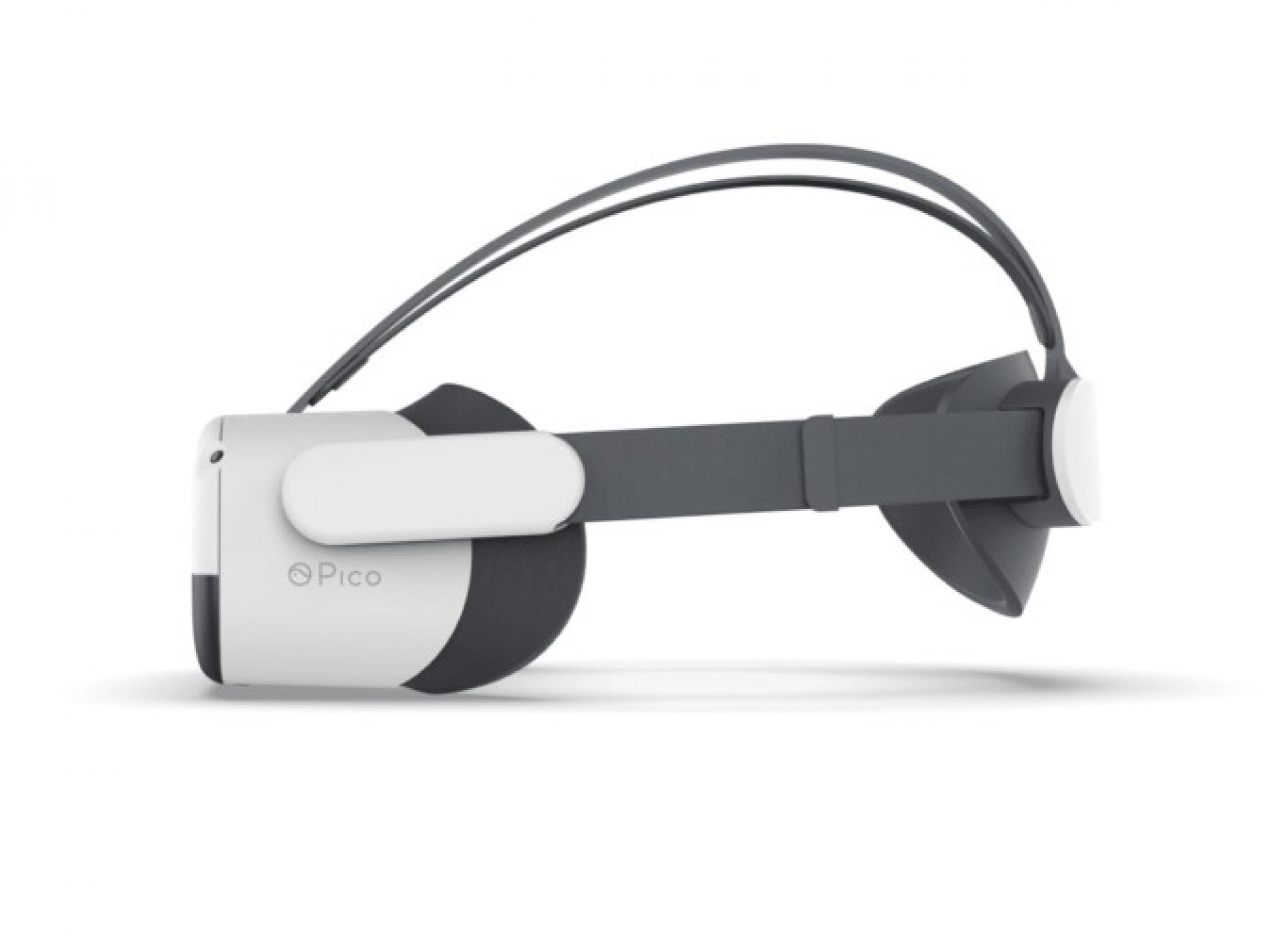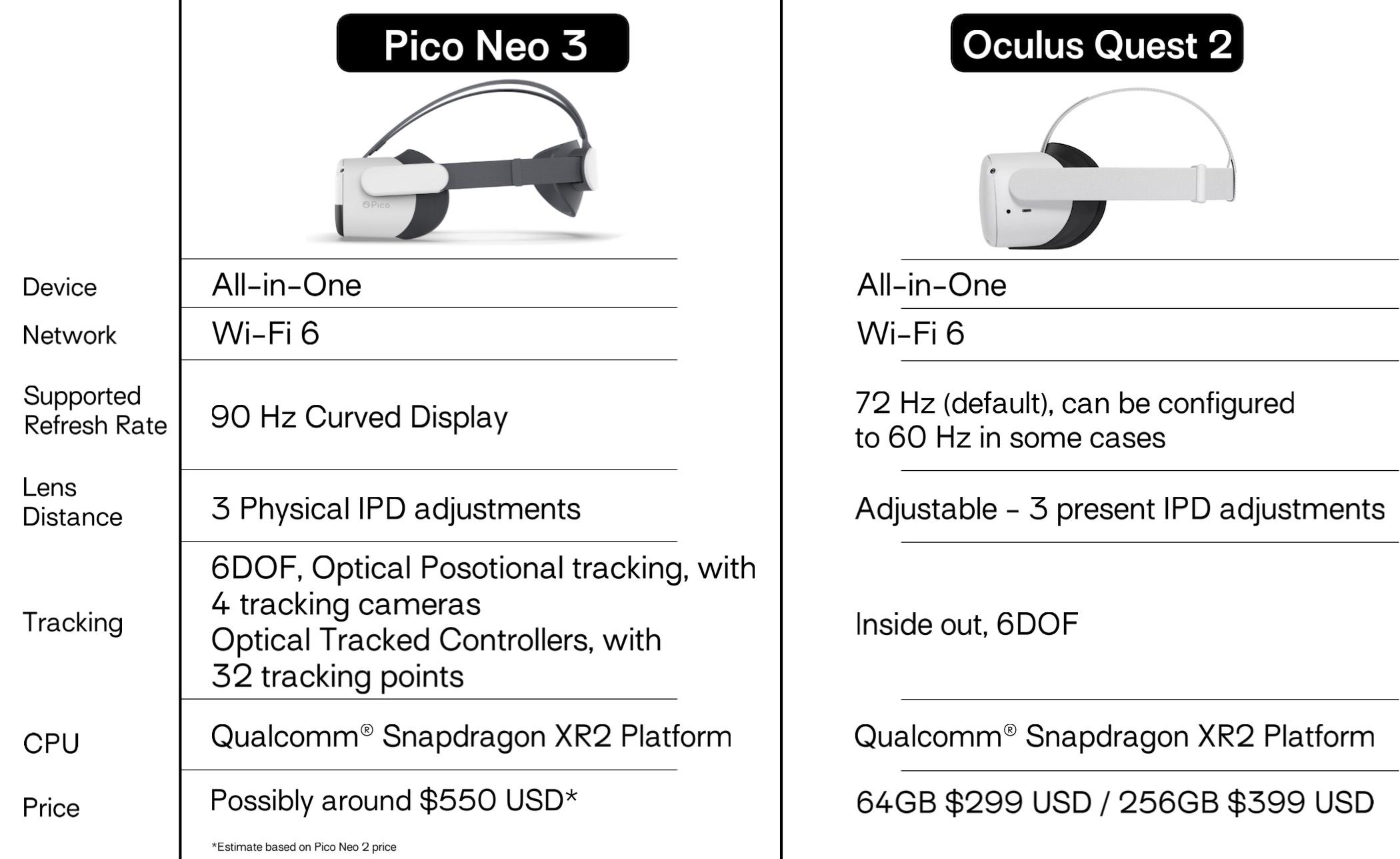Pico Neo 3, the Next Consumer VR Breakthrough – Detailed Review & Specs
On April 12th, 2021 Pico Interactive, the developer of All-in-One (AIO) VR solutions, made an official announcement to launch its new generation VR headset – Pico Neo 3. The announcement came from Pico Interactive official Weibo account, followed by the information of pre-sale availability of the new device starting April 16th. The product itself is expected to be launched at the conference planned for May 10th at the Beijing National Aquatics Center, China.
The new consumer aimed VR device is promised to deliver better perception and interactions, allowing users to have a more immersive experience. Compared to Pico Neo 2, the new device is promised to achieve double the CPU improvement along with a rapid resolution increase. Pico Neo 3 is predicted to be equipped with optical positional tracking using 4 cameras as well as optical tracked controllers with 32 tracking points.
Pico Interactive has announced that its new features will be built off of Neo 2. But we still hope to see the integration of Tobii built-in eye tracking, like in the Pico Neo 2 Eye model, which would give tremendous opportunities to collect analytical data based on user behavior during the VR experiences. We also would expect Neo 3 to include hand tracking, which has already been realized as a great addition to another VR All-in-One system, the Oculus Quest 2, launched in October 2020 by Facebook. Additionally we expect the new device to continue with the integration of Mobile Device Management (MDM) that would allow for an easy remote management of the platform.

Image Source: https://bit.ly/3sft5so
Pico Neo 3 is communicated to have a more competitive, consumer directed price. It is likely that it will follow within the range of Pico Neo 2 of approximately ¥3599.00 yuan / 550$ USD, at least on the Asian market. Additionally, there is a prediction of advancement in content availability, with further expansion and quality improvement for the Neo 3 device.
Pico Neo 3 should follow the color scheme of its predecessor VR headsets with a balanced black-and-white palette and a close resemblance in design. Still with improvements made, it is reported that users would possibly be able to easily wear the VR device for about 3 hours.
With that being said, there are predictions happening that Pico 3 could potentially become a notable competitor to Oculus Quest 2. The buzz is arising from the information that both devices will be based on the same CPU. Both Pico and Oculus Quest All-in-One VR devices are/will be running on Qualcomm® Snapdragon XR2. Which could only mean that we can expect to see a tough competitor appearing on Facebook’s horizon in the upcoming months, at least on the Asian markets.
It is still too early to tell whether the competition for consumers will be as tough worldwide as expected in Asia, we however deem it possible if Pico Interactive continues with its previous device privacy policy, allowing users to use any email account they wish to serve as a login into the VR system. On the other hand we have the Oculus Quest 2 privacy policy, which has already caused much controversy due to its requirement to make users use their Facebook accounts to login into the system.
We can only speculate about the full scope of specs expected for the new Pico device. Nevertheless we have managed to gathered some of the communicated parameters for the upcoming Pico Neo 3 launch vs Oculus Quest 2 officially stated specs:

Even though today we only have a short glimpse of what to expect from the new Pico Neo 3 device, it is still exciting to see more immersive systems appearing on the market. Especially the ones that are aimed at both businesses and consumers, promising an even better spatial performance as well as higher visual fidelity. There is no doubt that 2021 will bring more breakthroughs, it is just the matter of time and ability to embrace all of the novelties to come.
